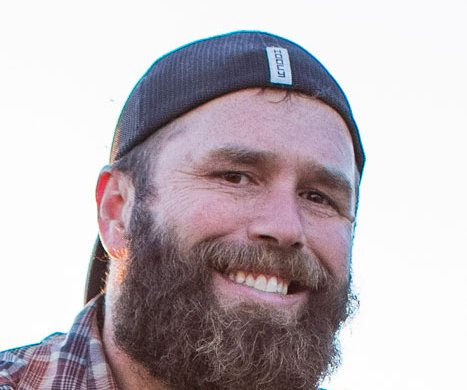It’s always nice to take a break from this frozen tundra. I had planned one for mid-December, but it didn’t work out. I then planned one for mid-January, but my sometimes traveling companion, Tom, was unable to make it.
So it was the end of January, with the unintended, but fortunate result of escaping the coldest southern Wisconsin weather in a generation.
Having spent 11 years of my career as head of the Ag Econ Department at New Mexico State University, I still have a house in old Mesilla and friends in Mesilla and Las Cruces. It’s not that I need that as an excuse to escape snow and ice for a while, but it serves as such.
As the upper Midwest was experiencing its coldest weather in a generation, Tom and I crossed the San Augustin Pass of the Organ Mountains with a gorgeous view of the Mesilla Valley of the Rio Grande bathed in afternoon sunshine. The Mesilla Valley, extending from Radium Springs, New Mexico, to El Paso, Texas, is a fertile valley conducive to agriculture. Alfalfa, cotton, corn, onions, and famed New Mexico chiles, are important cash crops. Pecans are a major crop with the world’s largest pecan orchard located just south of Las Cruces.
Las Cruces, the region’s largest city, is home to NMSU. Nearby is the historic, artsy town of Mesilla, population about 2,000. This quaint, idyllic community is conscious of its history and culture and maintains strict architectural and building codes—no ketchup palaces allowed.
In 1848, the Treaty of Hidalgo moved the U.S.-Mexico border south of the village of Dona Ana, placing it in the United States. A small group of those citizens, unhappy at being a part of the U.S., moved south and settled in Mesilla. Following a boundary dispute caused by a map error, the dispute was resolved in 1853 with the Gadsden Purchase. It made the southern part of New Mexico, which includes Mesilla, and Arizona part of the United States.
During the “Wild West” era, Mesilla was known for its cantinas and festivals. Billy the Kid, Pat Garrett and Poncho Villa are part of Mesilla’s colorful history. Mesilla was on the Butterfield Overland Mail stagecoach route and the Camino Real, the route from Mexico north along the Rio Grande to Santa Fe.
The Mesilla Historic District is a National Historic Landmark. A building on the plaza once was a jail that briefly held Billy the Kid. The building housing the Double Eagle Restaurant and Bar was the venue of a tragic murder. An aristocratic Spanish mother, in a blind rage, stabbed and killed her son’s lover and, inadvertently, her own son. The building is said to be haunted as numerous witnesses testify to inexplicable eerie events in the building.
As Tom and I descend from the pass to Las Cruces in late afternoon, the temperature approaches a comfortable 70 degrees.
We spend the next several days running errands, including checking with Jacque, the next door neighbor who oversees my house and my tenants. We have breakfast with friend and former colleague Jim and several retirees of NMSU. With former colleague and old pal Willie, we head down to La Mesa for a great Mexican dinner. On another day, we head up to Hatch, chile capital of the world, to enjoy their famous green chile cheeseburgers.
It’s soon time to leave and head to Ft. Hood, Texas, to visit daughter Kara and her husband of one year, Steve. We take I-10 through El Paso to Ft. Stockton, Texas, where we take U.S. 190 across sparsely populated rolling hills of west Texas to Killeen and Fort Hood.
An Army Corps consists of 40,000 to 45,000 troops. This includes two or more divisions, each division ranging between 10,000 and 16,000 troops, and supporting brigades, armored and artillery units. Fort Hood is home of the Army’s Third Corps that includes the 1st Cavalry Division, the 41st Field Artillery, the 1st Medical Brigade and other units. Kara and Steve take us on a tour of the base. It is huge, and surely much different than what vets of my vintage remember of military bases of the 1950s.
After a couple of days with Steve and Kara, it’s time to leave that pleasant Texas winter weather and head north. To avoid the horrible traffic of Fort Worth and Dallas, we take U.S. 281 north across Texas hill country, through sleepy small towns.
As we travel through Mineral Wells, a town of about 15,000 roughly 50 miles west of Fort Worth, we notice a large building on a hill top that seems out of place.
We don’t stop to investigate, but later do some research. That incongruous building is the old Baker Hotel that once was a famous health spa. In 1922, citizens of Mineral Wells were concerned that undeserving people were profiting from the community’s mineral water. They raised $150,000 and solicited Texas hotel magnate Theodore Baker to build a hotel. It was the first swimming pool in a Texas hotel, filled with the area’s curing mineral waters.
The hotel came upon hard times, alternately closing and reopening, until the last time in 1965. But the revival was brief with the death of Earl Baker, who suffered a heart attack. In 1972, the Baker Hotel closed its doors for the last time.
A group of citizens plans to renovate the property with a budget of $54 million. The third floor will still be maintained as a luxury mineral spa. As with numerous historic buildings, there are the inevitable stories of ghosts and eerie occurrences claimed by witnesses.
We cross the Red River into Oklahoma, taking U.S. 81 north. The temperature is unseasonably warm, in the high 60s. We stop in McPherson, Kansas, where the temperature is still in the 60s at 9 p.m.
The next morning, it’s back to the teens, prelude to the snow and ice we will encounter in February. Back to the frozen tundra once again.
— John Waelti’s column appears every Saturday in the Times.





